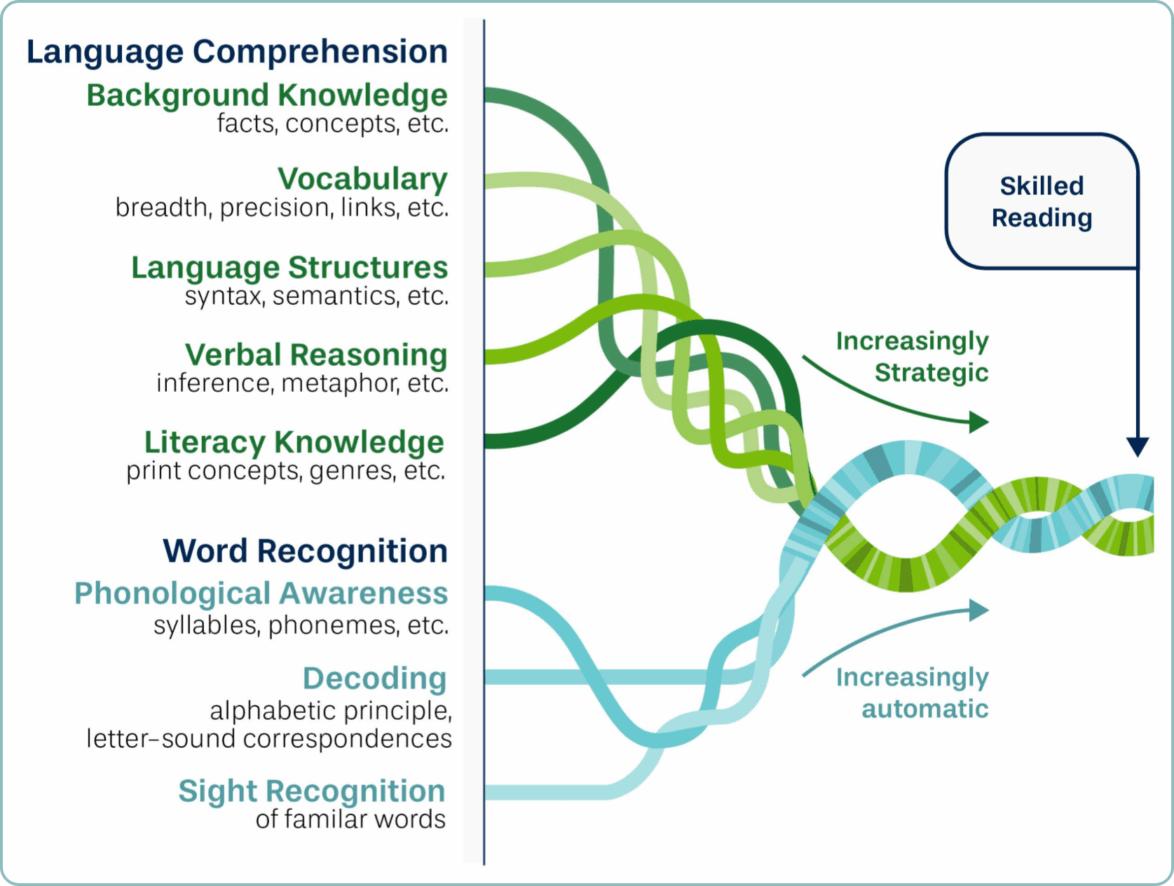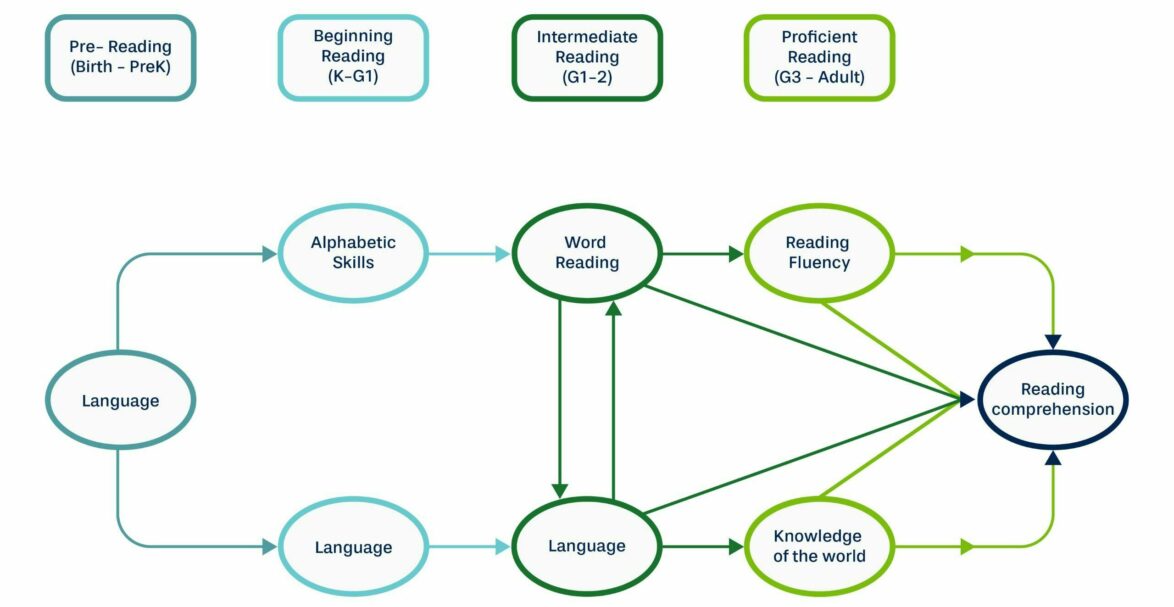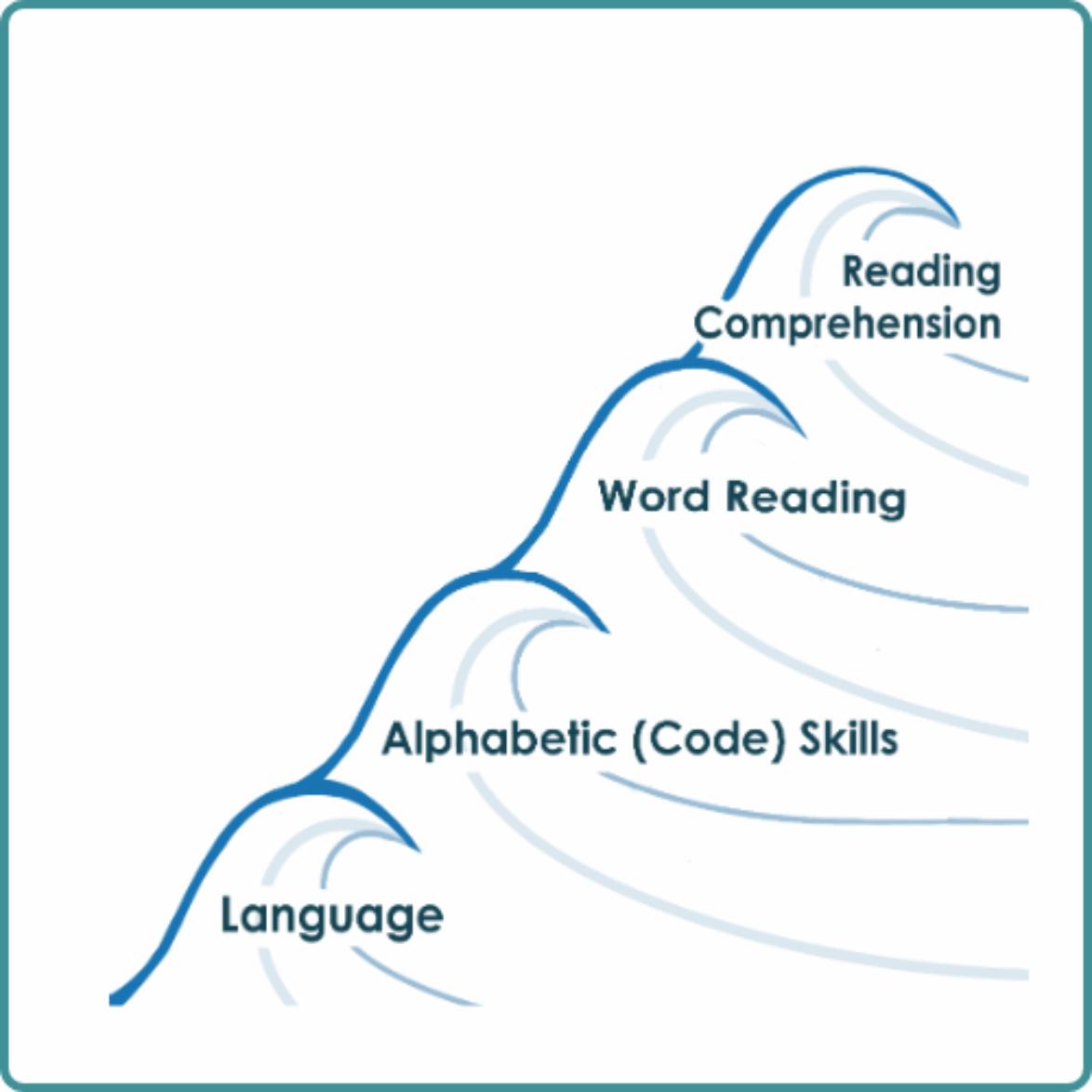The Reading is Language Model
Researchers have long tried to pin down the most important skills that help students learn how to read, known more commonly as the Science of Reading. The Simple View of Reading has framed much of this research and is now a mature model, integrated into the curriculum of many school systems.
What is the Simple View of Reading?
The Simple View of Reading states that you need two skills to understand what you’re reading: decoding and language comprehension. Decoding – or translating written words into speech – is crucial, but it won’t get you very far without a solid grasp of language. You can know how to pronounce every word, but if you don’t understand the meaning of what you’re reading, the whole point is lost. Scarborough’s Reading Rope is a popular representation of how these skills develop in parallel.
However, the Simple View of Reading creates a distinction between language and reading as if they were two separate developmental phases.

Beyond the Simple View of Reading
There is research that takes the Simple View of Reading further, showing that language underpins the whole process of learning to read. Oral language is essential not only for reading comprehension, as shown by the Simple View of Reading, but also for the development of foundational decoding skills.
A long-term study that followed students from 3-8 years of age found that 66% of children with poor language skills at 3.5 had poor reading skills at age 8.
This striking finding highlights that it’s time to recognize that oral language is at the heart of learning to read and a critical foundation of literacy. Without strong language skills, word reading, reading comprehension, and written expression will not develop effectively.
What is the Reading is Language Model?
In 2025, Snowling and Hulme proposed the Reading is Language Model, extending previously established ideas about reading development by championing that language is at the heart of learning how to read.
Reading and language are deeply interconnected, and one cannot develop without the other
According to the Reading is Language Model, early language skills form the foundation for the later development of both decoding words and language comprehension. Language and decoding skills, in turn, make the development of reading comprehension possible.
These ideas can be represented by the diagram below, which outlines how the different skills influence each other over the course of a child’s reading development journey.

Language is the precursor to learning to read
Another way we can think of reading development is involving a series of waves of development, with each subsequent wave dependent on all earlier waves. Language is the ocean from which every later wave of development originates.
What this also highlights is that reading development is not a linear process, and the different waves of development will typically overlap, just as they would in the ocean. Each wave represents rapid phases of development, which depend on a secure foundation in the skills that precede it. A secure foundation in language underpins all these developmental phases.

How can educators support children learning to read?
The research behind the Reading is Language model gives us a clear answer:
Any child with language difficulties in preschool will be at risk of later reading problems
With more children than ever not meeting age-expected reading outcomes, the Reading is Language model highlights that investing in intentional language instruction and intervention in preschool and early elementary will ensure students have the strong foundations they need for learning to read, resulting in fewer literacy challenges in later grades.
